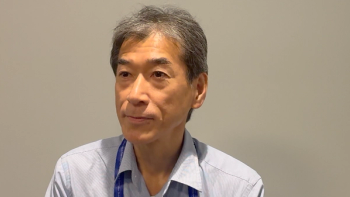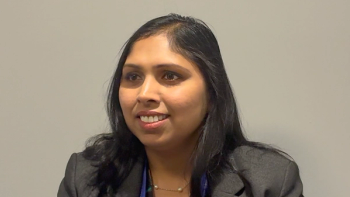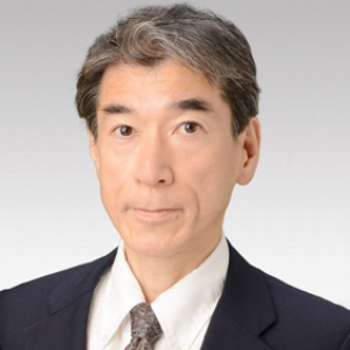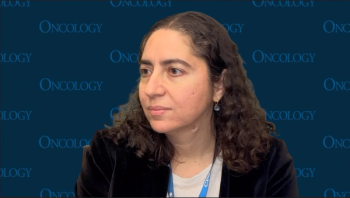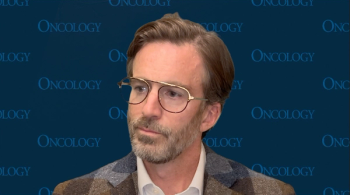
ASH: Annual Meeting Highlights Exciting Advances in Hematology
As part of our coverage for the 2013 American Society of Hematology Annual Meeting and Exposition, we discuss some of the research that will be highlighted during this year’s meeting.
As part of our coverage for the 2013 American Society of Hematology Annual Meeting and Exposition, we spoke with Dr. Janis L. Abkowitz, president of ASH and head of the hematology division at the University of Washington School of Medicine. Dr. Abkowitz is presiding over the 55th annual meeting being held December 7–10 in New Orleans.
-Interviewed by Leah Lawrence
Cancer Network: Dr. Abkowitz, this year’s annual meeting includes more than 4,500 abstracts. Can you briefly discuss some of the research that will be highlighted during this year’s meeting?
Dr. Abkowitz: First, thanks for this opportunity to speak to your audience of physicians about what I think is going to be a really exciting meeting-in part, because of the huge breadth and depth of the kind of science and clinical material that is being presented. If one looks back from a broader perspective, there are a couple themes that I think make this meeting different from some of our other meetings before.
One is the theme of personalized medicine. What I mean by that is not genomics, which I will talk about in a second, but how a physician can pick the best therapy for an individual patient. One of the problems in many of our clinical trials is that exclusion criteria exclude those people who are actually more likely to have the disease. An example might be chronic lymphocytic leukemia (CLL), where many treatment trials will exclude an elderly population that is more likely to have CLL; therefore, the information in the trial may not be entirely applicable to the patients we see in practice.
At this meeting, several phase III trials will specifically look at patients who are generally excluded from these earlier studies and that are either too old or too ill for highly toxic therapy. The plenary session actually highlights two of these. One of them is a phase III study looking at GA101, or obinutuzumab, with chlorambucil as opposed to Rituxan with chlorambucil for patients with CLL who have coexisting medical conditions. And the second study looks at and speaks to the importance of myeloma patients that are not candidates for stem cell transplantation to continue lenalidomide and dexamethasone therapy.
In the late-breaking abstracts there is a really quite exciting interim analysis of a phase III study of an oral PIK3 inhibitor-a first in class-used in previously treated CLL patients who can receive additional chemotherapy. All of these are going to bring really important messages to clinicians on providing alternate ways to treat tough patients and, in particular, those who are elderly.
In addition, in the late-breaking abstract session, there is a look at D-dimer as a predictor for patients who have pulmonary embolus or other clotting events. This is recognition that as one gets older, that D-dimer level can be higher because of coexistent conditions-perhaps liver disease or renal disease or aging-so that one’s metabolism or processing of D-dimer might be different, perhaps making D-dimer different. If one uses an age-adjusted D-dimer, then it becomes very much a better predictor for individuals over 50 of a clotting event. I think this is going to be an interesting theme, that we are getting more information about how to treat, in a personalized fashion, patients with different conditions.
The flip side of that is the second theme of the meeting-precision medicine. How genomics and other identification of targets can lead to novel therapies. There are a couple abstracts that are perhaps symbolic of all of the abstracts that are presented at the meeting. One might be a look at where whole exome sequencing has revealed the clonal heterogeneity of multiple myeloma. Clonal architecture is very complex and involves many genes and subclones. Clearly, going forward, we are going to learn a lot about both the evolution of monoclonal gammopathy of unclear significance to myeloma and the progression of myeloma based on the associated genomic analyses.
In addition, two other abstracts to highlight that are late-breaking sessions have used genomics to discover the cause and effect in myeloproliferative disorders that are JAK2-negative. Ninety-eight percent or so of patients have JAK2V614F mutations, and that mutation is present in about 50% to 60% of individuals with essential thrombocytosis or with idiopathic myelofibrosis. In those latter populations, it was unclear what the remaining persons have. A gene has been discovered, by two different independent groups, called calreticulin, which has very interesting biologic properties and will not only be important for a new target for therapy, but will be important for diagnostics, and will open a lot of biology about understanding the pathways that lead to the growth of myeloid progenitor cells.
That is a little bit of an overview, but I think the current themes of personalized medicine and precision medicine are going to come throughout the meeting and not just the highlighted sessions, but all the invited speakers for both the science and education sessions and the abstracts that go throughout the oral sessions as well.
Cancer Network: Like several other associations this year, ASH will be releasing a Choosing Wisely list of the top five things physicians and patients should question. Can you discuss how the items for this list were chosen?
Dr. Abkowitz: The way that the items were chosen was through our practice committee. I will highlight one person, Lisa Hicks, an individual who decided that she would make this an academic project for herself. Besides trying to define the five most important things that a patient should talk to their physician about, which is again an initiative that came from the ABIM Foundation, she decided to figure out a method for it. How could one contact our physician population more broadly? How can one process the things that are suggested? It started with a long list and, of course, ended up as a list of five. One of the remarkable things to me was the process that was developed, the methodology for how to figure this out. She is going to convert that into an academic paper. It should hopefully become a methodology going forward that we as physicians can use to exclude things that we do regularly-and that may be more than five things and just something we think about as we practice.
The five things that are going to be discussed as what a hematologist should question are the following:
The first thing is that we shouldn’t transfer more than the minimum number of red cells needed to relieve a symptom. Rather than a knee-jerk response, giving two units or three units of blood because that is what we have learned, if one unit is sufficient to alleviate the symptom-and it might even be appropriate based on weight-based consideration or children or other situations-that should be done because that will preserve the blood supply and be consistent with a best practice.
The second thing is that we shouldn’t test for thrombophilia in adult patients who have thromboembolism in the setting of known risk factors: surgery, trauma, prolonged immobility. In a setting where we know why someone clots, there is low likelihood that contributor would be a genetic factor, and our management would not differ based on that information. These excess tests may not be required.
The third thing is that we are going to suggest that we don’t use inferior vena cava filters routinely in patients with acute venous thromboembolism. Those filters can lead to further long-term consequences with incompetent valves and a lot of morbidity. These should be reserved for situations where there is extremely high risk of pulmonary embolism, and then a non-permanent filter can be placed. Then we have to remember to remove it when that risk is no longer present.
The last two relate to not administering plasma or prothrombin complex concentrates for non-emergent settings because of cost-risk-benefit ratio, and to limit the surveillance with CT scans for asymptomatic patients with aggressive lymphoma following a period of intense treatment. This last one is something that needs consensus thought about what the likelihood of recurrence is in the disease versus the likelihood that you are going to pick up something that would impact therapy or outcome.
These are five quite varied thoughts that I think are critically important for patients to discuss with their doctors, and they should come to appropriate conclusions about what is right for them given these concerns and questions.
Cancer Network: What do you hope the next few years hold for hematology research and the treatment of hematologic conditions?
Dr. Abkowitz: That is a great question because this is a super time for hematology. Between the new agents that are available and the ways we can put them together, there is real excitement for particularly less toxic agents and also the extension of these agents for more difficult-to-treat populations, such as elderly persons or persons with comorbidities.
In the science domain, this is an amazing time to be a hematologist. The availability of whole genome sequencing and a number of other ways of querying DNA, RNA, and proteins means we can start to put together networks that help cells make decisions and find new pathways to target malignancy, or to improve differentiation in thrombocytopenia. Besides just understanding biology and understanding genomics, there is also the ability to harness the genome and to redirect it in interesting fashions.
I think at this meeting another really interesting theme is going to be chimeric antigen receptor cells and how one can engineer a T-cell to attack lymphoma or leukemia. There is actually a number of abstracts on this, both oral and poster abstracts, and a featured topic session, which is something new for ASH this year, where investigators are going to look at the lay of the land and talk about where we are and where we might go with the therapy. Similarly at ASH this year the presidential symposium is focused on genomics, in terms of are we there, what we do, what the clinical implications are, what the realities are, what questions remain, and what the complications are-all difficult things you have to consider when applying genomic information to patient care decision making. I think questions are going to be answered. This is a really exciting time to be a hematologist.
Cancer Network: It sounds like it is going to be an exciting meeting this year. Thank you for taking the time to speak with us today.
Dr. Abkowitz: Okay, my pleasure.
Newsletter
Stay up to date on recent advances in the multidisciplinary approach to cancer.


